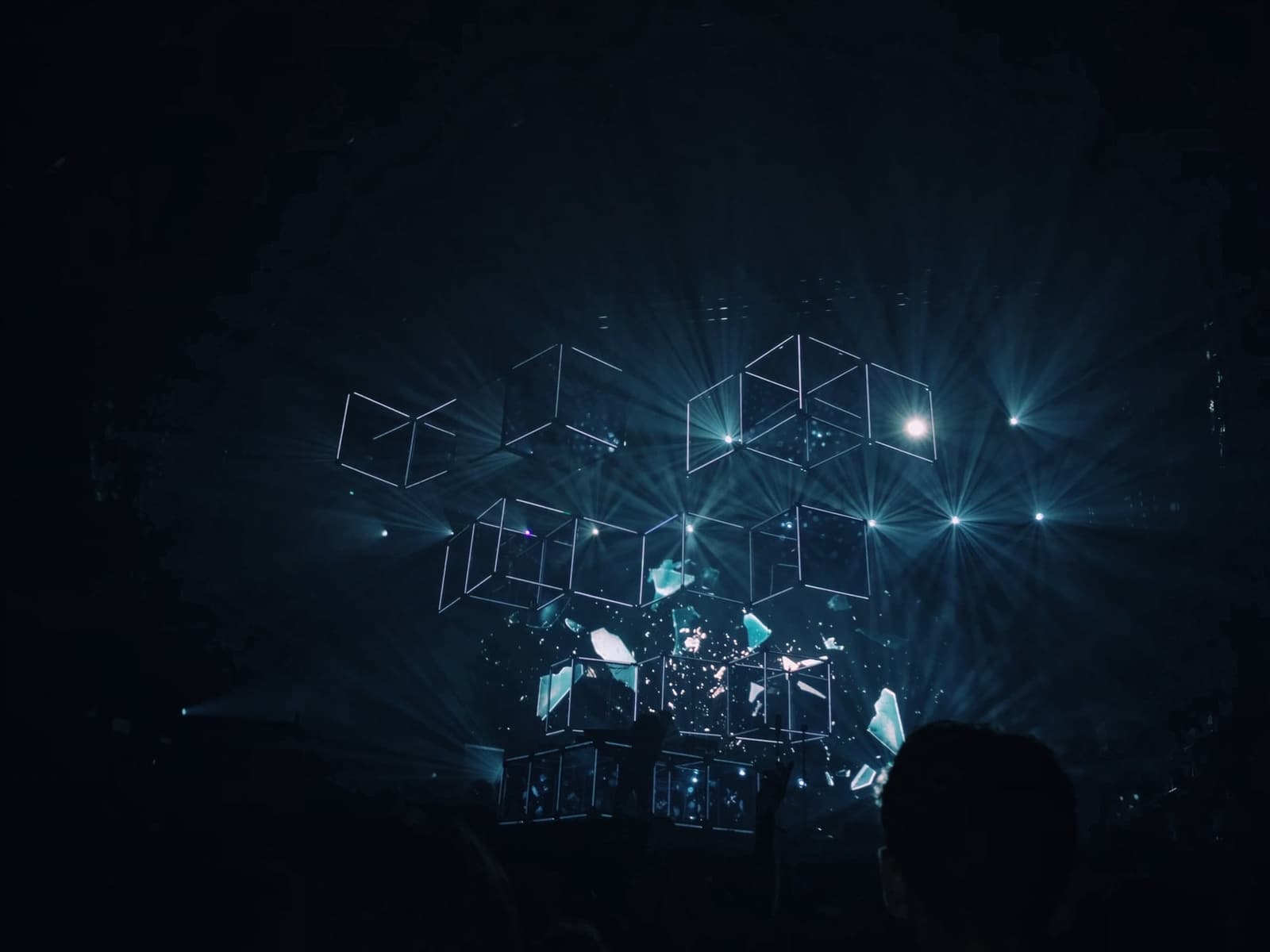IN
IN
JPN
EN
Join Our Communities

The rise of blockchain and generative art is creating new communities among collectors and creators, with micro-cultures springing up around NFT marketplaces like Objkt.com and around the chains underpinning the minting of NFTs and providing seeds for the creation of generative art.
“For collectors and artists, find a subculture that you’re interested in,” said Galanakis. “Find a community. There’s never been, since the beginning of the internet, this breakaway of lots of micro-cultures. And [it’s] there you’ll find your people, and you’ll find the stuff you really like.”
Both artists started using the (now maligned) Flash software, which was popular for creating web animations in the 90s and early 2000s. Galanakis said he started coding and designing in Flash, being inspired by street and dance music cultures.
“From there, data became my tool of choice [and I] started coding more and more,” he said. “And I guess the data just transformed into generative at some stage.”
Azahari also got his start using Flash as a teenager, creating basic animations before discovering Flash ActionScript. “It got me more interested in coding and tech, but I didn’t go straight into art,” he said. “I was a bit more pragmatic with my career [and] went into enterprise software development. So, I was still playing around with code, but not so much as art.”
The desire to create eventually pushed him into the art world, saying that instead of doing code for people to file their taxes, he’s doing something that’s a little more superfluous and fun.
The two artists say they have similar styles, with Galanakis describing his work as minimalist, inspired by science fiction and dance music culture, as well as early computer art.
“When we saw each other’s art, it was pretty similar,” said Azahari. “I also see mine as minimalistic and geometric. “He said he draws his inspiration from op art, Bauhaus, and early graphic design. “I’m also inspired by glitch and pixel art,” he said.
There’s some debate about exactly what generative art is, but Azahari clarifies it, saying it’s anything executed by following a set of (programmed) instructions, as well as there is a sense of randomness, which creates an artwork that is more interesting.
Galanakis observes the term generative art is broad and said he doesn’t like putting things in boxes. “I guess for me, I see it like some collaboration with the computer and the data, and then you’re nudging it in certain directions,” he said.
“Sometimes it’s about just defining boundaries about where the art can go,” Azahari said. “It’s about finding the balance between how narrow or broad those boundaries are.”
Both artists believe blockchain has enabled generative art – particularly in building community and letting artists support themselves through their work – but they also state computer art has been around forever.
“In a way [blockchain and generative art have] met each other and become lovers in a perfect storm at the right time,” said Galanakis.
He points to the work done by Erick Snowfro and ART BLOCKS as an example of how generative art and blockchain have come together, noting the future of generative is code on the blockchain, which can be turned into art again and again without having to have any other tools.
“I think the blockchain just adds to the element of randomness,” said Azahari. “What Art Blocks does is generate a hash, and every time you mint it, the hash is taken into the algorithm and is interpreted into variables which influence the artwork.”
Azahari also draws a strong delineation between NFTs, and crypto art, which uses blockchain mechanics as part of the art. In contrast, an NFT doesn’t usually take the underlying algorithm into account.
“People are understanding NFTs more, but they’re also understanding what is going on in generative art and what it actually means,” said Galanakis. “And they’re starting to love this output, which is just [a] perfect combination of computer and human working together.”
Galanakis and Azahari have worked together on a project called The MAD HATTERS CLUB. According to Galanakis, it’s a collection of 888 generative bunnies with different levels of drops, from one to 50 editions.
“Each design is unique and generative,” he said. “It looks at your wallet [to] generate the art.”
Azahari describes the reaction to the project as “surprising,” observing that the artists were so busy with development they were not sure how it would go. “We dropped it and they instantly sold out, which was a shock and exciting for both of us.”
Galanakis said he started CRYPTO ART WEEK ASIA, the world’s largest Crypto art showcase and a vehicle that celebrates Asia as a rising creative force in global culture, partly because there was a perception of not much digital art being done in Asia.
Until now, the main market for digital art is on the West Coast of the USA, however increasingly it’s emerging markets like Southeast Asia that are seeing an explosion in digital art creators and a growing audience of passionate collectors.
“I did it specifically around these questions of how things are way more difficult for artists in Asia for a number of reasons.”
Now, said Galanakis, there are a wealth of great projects coming out of Asia and a lot of artists stepping up and being recognized in the digital art sector.
“We’re this giant region, and there’s still a lot to go,” he said. “But projects are being recognized, and platforms are making an effort to be more inclusive.”
“I think that when we look back in 50 years, there will be this expression of this excitement around the science fiction world we are entering into with blockchain and generative art,” he concludes.